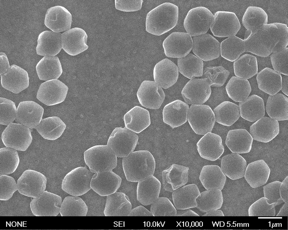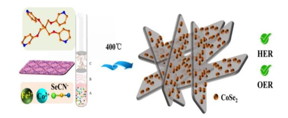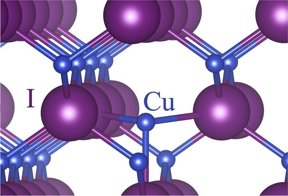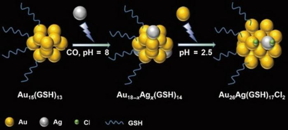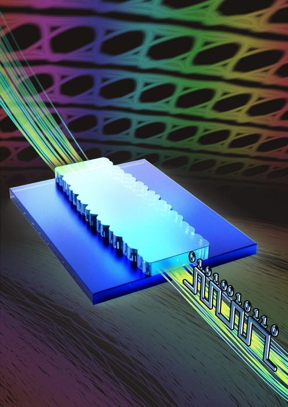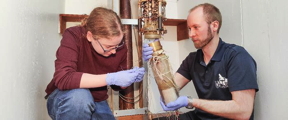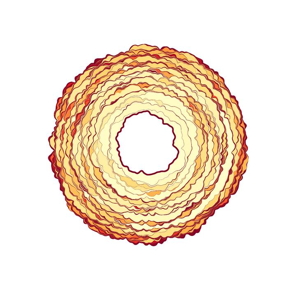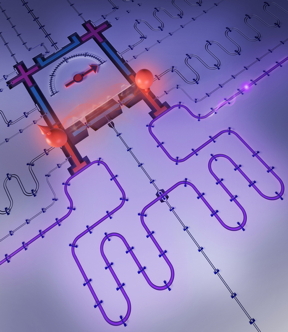Home > Press > Beyond lithium: a promising cathode material for magnesium rechargeable batteries: Scientists discover the optimal composition for a magnesium secondary battery cathode to achieve better cyclability and high battery capacity
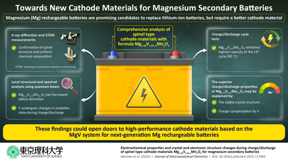 |
| TUS researchers have proposed a new system, Mg1.33V1.57Mn0.1O4, that promises to take Mg batteries to the next level in terms of cycling performance and efficiency of cathode materials. CREDIT Yasushi Idemoto from TUS, Japan |
Abstract:
Lithium-ion batteries have remained unrivaled in terms of overall performance for several applications, as evidenced by their widespread use in everything from portable electronics to cellular base stations. However, they suffer from few important disadvantages that are difficult to ignore. For one, lithium is rather expensive, and the fact that it is being mined at an extreme pace does not help. Moreover, the energy density of lithium-ion batteries is not enough to grant autonomy to electric vehicles and heavy machinery. These concerns, coupled with the fact that the batteries are highly unsafe when punctured or at high temperatures, have caused scientists to look for alternative technologies.
Beyond lithium: a promising cathode material for magnesium rechargeable batteries: Scientists discover the optimal composition for a magnesium secondary battery cathode to achieve better cyclability and high battery capacity
Tokyo, Japan | Posted on February 10th, 2023
Among the various elements being tested as efficient energy carriers for rechargeable batteries, magnesium (Mg) is a promising candidate. Apart from its safety and abundance, Mg has the potential to realize higher battery capacities. However, some problems need to be solved first. These include the low voltage window that Mg ions provide, as well as the unreliable cycling performance observed in Mg battery materials.
To tackle these issues, a research team led by Vice President and Professor Yasushi Idemoto from Tokyo University of Science, Japan has been on the lookout for new cathode materials for Mg batteries. In particular, they have been searching for ways to improve the performance of cathode materials based on the MgV (V: vanadium) system. Fortunately, as reported in a recent study made available online on 8 December 2022 and published in Volume 928 of the Journal of Electroanalytical Chemistry on 1 January 2023, they have now found the right track to success.
The researchers focused on the Mg1.33V1.67O4 system but substituted some amount of vanadium with manganese (Mn), obtaining materials with the formula Mg1.33V1.67−xMnxO4, where x goes from 0.1 to 0.4. While this system offered high theoretical capacity, more details about its structure, cyclability, and cathode performance needed to be analyzed to understand its practical utility. Accordingly, the researchers characterized the synthesized cathode materials using a wide variety of standard techniques.
First, they studied the composition, crystal structure, electron distribution, and particle morphologies of Mg1.33V1.67−xMnxO4 compounds using X-ray diffraction and absorption, as well as transmission electron microscopy. The analyses showed that Mg1.33V1.67−xMnxO4 has a spinel structure with a remarkably uniform composition. Next, the researchers conducted a series of electrochemical measurements to evaluate the battery performance of Mg1.33V1.67−xMnxO4, using different electrolytes and testing the resulting charge/discharge properties at various temperatures.
The team observed a high discharge capacity for these cathode materials—especially Mg1.33V1.57Mn0.1O4—but it also varied significantly depending on the cycle number. To understand why, they analyzed the local structure near the vanadium atoms in the material. “It appears that the particularly stable crystal structure along with a large amount of charge compensation by vanadium leads to the superior charge–discharge properties we observed for Mg1.33V1.57Mn0.1O4,” remarks Prof. Idemoto. “Taken together, our results indicate that Mg1.33V1.57Mn0.1O4 could be a good candidate cathode material for magnesium rechargeable batteries.”
Satisfied with the present findings and hopeful about what is to come, Prof. Idemoto concludes: “Through future research and development, magnesium batteries could surpass lithium-ion batteries thanks to the former’s higher energy density.”
Indeed, substituted MgV systems could eventually lead to the much awaited next-generation batteries. Let us hope the highly anticipated alternative to lithium for our rechargeable battery needs will be realized soon!
***
Reference
DOI: https://doi.org/10.1016/j.jelechem.2022.117064
Authors: Yasushi Idemoto1,2,3, Mina Takamatsu1, Chiaki Ishibashi1,2, Naoya Ishida1, Toshihiko Mandai3, Naoto Kitamura1,2
Affiliations:
1Department of Pure and Applied Chemistry, Faculty of Science and Technology, Tokyo University of Science, Japan.
2Research Group for Advanced Energy Conversion, Research Institute for Science and Technology, Tokyo University of Science, Japan.
3Center for Advanced Battery Collaboration, Center for Green Research on Energy and Environmental Materials, National Institute for Materials Science, Japan.
####
About Tokyo University of Science
Tokyo University of Science (TUS) is a well-known and respected university, and the largest science-specialized private research university in Japan, with four campuses in central Tokyo and its suburbs and in Hokkaido. Established in 1881, the university has continually contributed to Japan’s development in science through inculcating the love for science in researchers, technicians, and educators.
With a mission of “Creating science and technology for the harmonious development of nature, human beings, and society,” TUS has undertaken a wide range of research from basic to applied science. TUS has embraced a multidisciplinary approach to research and undertaken intensive study in some of today’s most vital fields. TUS is a meritocracy where the best in science is recognized and nurtured. It is the only private university in Japan that has produced a Nobel Prize winner and the only private university in Asia to produce Nobel Prize winners within the natural sciences field.
Website: https://www.tus.ac.jp/en/mediarelations/
For more information, please click here
Contacts:
Hiroshi Matsuda
Tokyo University of Science
Copyright © Tokyo University of Science
If you have a comment, please Contact us.
Issuers of news releases, not 7th Wave, Inc. or Nanotechnology Now, are solely responsible for the accuracy of the content.
| Related Links |
| Related News Press |
News and information
![]() Graphene Flagship start-up Bedimensional closes a second €10 million investment round February 10th, 2023
Graphene Flagship start-up Bedimensional closes a second €10 million investment round February 10th, 2023
![]() Make them thin enough, and antiferroelectric materials become ferroelectric February 10th, 2023
Make them thin enough, and antiferroelectric materials become ferroelectric February 10th, 2023
![]() Scientists reveal the effect of Cu(I) structure on quantum sieving for hydrogen isotope separation February 10th, 2023
Scientists reveal the effect of Cu(I) structure on quantum sieving for hydrogen isotope separation February 10th, 2023
Possible Futures
![]() Make them thin enough, and antiferroelectric materials become ferroelectric February 10th, 2023
Make them thin enough, and antiferroelectric materials become ferroelectric February 10th, 2023
![]() Scientists reveal the effect of Cu(I) structure on quantum sieving for hydrogen isotope separation February 10th, 2023
Scientists reveal the effect of Cu(I) structure on quantum sieving for hydrogen isotope separation February 10th, 2023
Discoveries
![]() Make them thin enough, and antiferroelectric materials become ferroelectric February 10th, 2023
Make them thin enough, and antiferroelectric materials become ferroelectric February 10th, 2023
![]() Scientists reveal the effect of Cu(I) structure on quantum sieving for hydrogen isotope separation February 10th, 2023
Scientists reveal the effect of Cu(I) structure on quantum sieving for hydrogen isotope separation February 10th, 2023
Announcements
![]() Graphene Flagship start-up Bedimensional closes a second €10 million investment round February 10th, 2023
Graphene Flagship start-up Bedimensional closes a second €10 million investment round February 10th, 2023
![]() Fiber sensing scientists invent 3D printed fiber microprobe for measuring in vivo biomechanical properties of tissue and even single cell February 10th, 2023
Fiber sensing scientists invent 3D printed fiber microprobe for measuring in vivo biomechanical properties of tissue and even single cell February 10th, 2023
![]() Photonic Materials: Recent Advances and Emerging Applications February 10th, 2023
Photonic Materials: Recent Advances and Emerging Applications February 10th, 2023
![]() Make them thin enough, and antiferroelectric materials become ferroelectric February 10th, 2023
Make them thin enough, and antiferroelectric materials become ferroelectric February 10th, 2023
Interviews/Book Reviews/Essays/Reports/Podcasts/Journals/White papers/Posters
![]() Make them thin enough, and antiferroelectric materials become ferroelectric February 10th, 2023
Make them thin enough, and antiferroelectric materials become ferroelectric February 10th, 2023
![]() Scientists reveal the effect of Cu(I) structure on quantum sieving for hydrogen isotope separation February 10th, 2023
Scientists reveal the effect of Cu(I) structure on quantum sieving for hydrogen isotope separation February 10th, 2023
Automotive/Transportation
![]() Novel microscope developed to design better high-performance batteries: Innovation gives researchers inside view of how batteries work February 10th, 2023
Novel microscope developed to design better high-performance batteries: Innovation gives researchers inside view of how batteries work February 10th, 2023
![]() UC Irvine researchers decipher atomic-scale imperfections in lithium-ion batteries: Team used super high-resolution microscopy enhanced by deep machine learning January 27th, 2023
UC Irvine researchers decipher atomic-scale imperfections in lithium-ion batteries: Team used super high-resolution microscopy enhanced by deep machine learning January 27th, 2023
![]() New nanowire sensors are the next step in the Internet of Things January 6th, 2023
New nanowire sensors are the next step in the Internet of Things January 6th, 2023
Battery Technology/Capacitors/Generators/Piezoelectrics/Thermoelectrics/Energy storage
![]() Novel microscope developed to design better high-performance batteries: Innovation gives researchers inside view of how batteries work February 10th, 2023
Novel microscope developed to design better high-performance batteries: Innovation gives researchers inside view of how batteries work February 10th, 2023
![]() Make them thin enough, and antiferroelectric materials become ferroelectric February 10th, 2023
Make them thin enough, and antiferroelectric materials become ferroelectric February 10th, 2023
![]() UC Irvine researchers decipher atomic-scale imperfections in lithium-ion batteries: Team used super high-resolution microscopy enhanced by deep machine learning January 27th, 2023
UC Irvine researchers decipher atomic-scale imperfections in lithium-ion batteries: Team used super high-resolution microscopy enhanced by deep machine learning January 27th, 2023
![]() Correlated rattling atomic chains reduce thermal conductivity of materials January 20th, 2023
Correlated rattling atomic chains reduce thermal conductivity of materials January 20th, 2023
- SEO Powered Content & PR Distribution. Get Amplified Today.
- Platoblockchain. Web3 Metaverse Intelligence. Knowledge Amplified. Access Here.
- Source: http://www.nanotech-now.com/news.cgi?story_id=57297
- 1
- 10
- 2022
- 2023
- 27th
- 28
- 3d
- 7
- a
- About
- abundance
- AC
- accordingly
- accuracy
- accurate
- Achieve
- advanced
- advances
- alternative
- amount
- and
- Anticipated
- apart
- applications
- applied
- approach
- asia
- available
- Bandwidth
- base
- based
- basic
- batteries
- battery
- become
- being
- BEST
- Better
- Beyond
- boost
- broad
- candidate
- capacities
- Capacity
- carriers
- caused
- Center
- central
- CGI
- chains
- characterized
- charge
- chemistry
- Closes
- collaboration
- COM
- come
- comment
- Compensation
- Concerns
- conductivity
- content
- continually
- contributed
- Conversion
- could
- coupled
- credit
- Crystal
- cycle
- December
- Decipher
- deep
- density
- Depending
- Design
- details
- developed
- Development
- Diego
- different
- difficult
- discover
- distribution
- Door
- educators
- effect
- efficiency
- efficient
- Electric
- electric vehicles
- Electronics
- elements
- emerging
- energy
- energy density
- Engineers
- enhanced
- enough
- environmental
- established
- Ether (ETH)
- evaluate
- Even
- eventually
- everything
- expensive
- extreme
- fast-charging
- faster
- February
- few
- field
- Fields
- First
- flagship
- focused
- formula
- Fortunately
- found
- Frequency
- from
- future
- gif
- gives
- Goes
- good
- grant
- Green
- Group
- Growing
- help
- High
- high-performance
- high-resolution
- higher
- highly
- hope
- How
- However
- HTML
- HTTPS
- human
- hydrogen
- important
- improve
- in
- Inc.
- include
- indicate
- information
- Innovation
- Institute
- Internet
- investment
- issues
- IT
- January
- Japan
- journal
- large
- largest
- lead
- Leads
- Led
- Level
- links
- lithium
- local
- Look
- love
- Low
- machine
- machinery
- made
- material
- materials
- measurements
- measuring
- Microscope
- Microscopy
- million
- MINA
- mined
- Mission
- more
- most
- multidisciplinary
- nanotechnology
- National
- Natural
- Nature
- Near
- Need
- needed
- needs
- net
- New
- news
- next
- next-generation
- nobel prize
- Noise
- number
- obtaining
- offered
- ONE
- online
- open
- optimal
- overall
- Pace
- particle
- particular
- particularly
- performance
- PHP
- plato
- Plato Data Intelligence
- PlatoData
- please
- Post
- posted
- potential
- Practical
- present
- president
- private
- prize
- problems
- produce
- Produced
- Professor
- promises
- promising
- properties
- proposed
- provide
- published
- Quantum
- range
- realize
- realized
- recent
- recognized
- reduce
- reducing
- Releases
- remained
- Reported
- research
- research and development
- researchers
- respected
- responsible
- resulting
- Results
- return
- reveal
- Safety
- San
- San Diego
- Save
- Science
- Science and Technology
- SCIENCES
- scientists
- Search
- searching
- Second
- secondary
- sensors
- Series
- several
- Share
- signals
- significantly
- single
- Society
- some
- stable
- standard
- start
- Start-up
- Stations
- Step
- structure
- studied
- Study
- submit
- success
- Super
- superior
- Surface
- surpass
- surprising
- system
- Systems
- Take
- team
- techniques
- Technologies
- Technology
- terms
- Testing
- The
- their
- theoretical
- thermal
- Through
- to
- today
- together
- tokyo
- toward
- track
- understand
- university
- us
- use
- utility
- variety
- various
- Vehicles
- Vice President
- View
- vital
- vivo
- Voltage
- volume
- Wave
- ways
- well-known
- What
- What is
- while
- wide
- Wide range
- widespread
- will
- winners
- within
- X
- x-ray
- Yahoo
- zephyrnet













